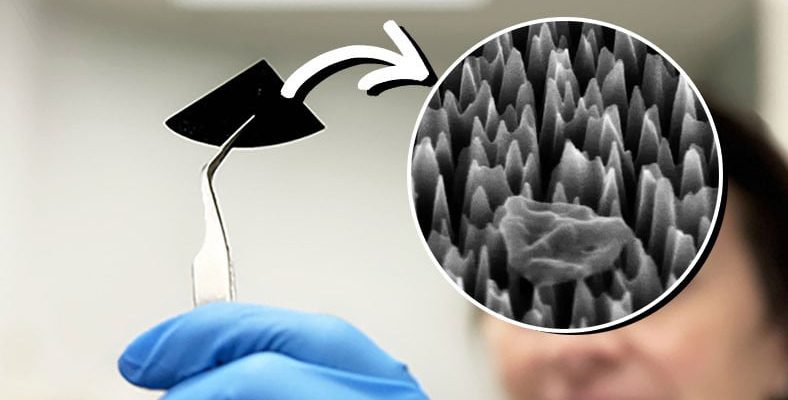Scientists have revealed a spiky object that damages the virus as soon as it comes into contact with it.
We have seen the emergence of countless drugs in the process of fighting viruses. It wouldn’t be wrong to say that we suddenly learned about medicines, especially during the pandemic period. But viruses It is evolving, and in order to keep up with it, we need to develop our medicines accordingly. It is important not only the effects of drugs, but also that they become more practical.
of Australia from RMIT University Researchers have introduced a new material that will use brute force in the fight against viruses. This material, which can be used in hospitals, laboratories and other sensitive places, is a protective agent for viruses that come into contact with it. acts as a trap.
Don’t be fooled by how smooth it looks, it has a spiky structure.
Outside view of the object
Although the material developed in 2 years is soft for us, it is microscopically durable. has nano-spines. These spines are so small that they can cut and puncture cells. The object tested against hPIV-3 viruses showed a 96 percent success rate. Viruses that came into contact with this object were either disintegrated or at a level that could not be corrected. heavy damage took.

A virus on the plate
As a result of these damages, viruses; It could not spread infections such as pneumonia, croup and bronchitis. This process, which does not require any external intervention, can be carried out within 6 hours. Interesting design insects inspired. Scientists studying dragonfly and cicada species also found similar nano spines on the wings of these species. The function of these spines is to similarly prevent bacterial cells from spreading.

Damaged virus residue
But since viruses are much smaller than bacteria, they adapt to the situation smaller spines It had to be revealed. To make the object in question, researchers bombarded a silicon wafer with ions with a special device. At this stage, researchers create protrusions in certain parts of the plate. 2 nanometers thick and 290 nanometers long He obtained needles. This means that they are 30 thousand times thinner than our hair.
With this material, researchers hope to reduce the use of large amounts of chemicals to get rid of viruses. You can view the entire study here.
RELATED NEWS
